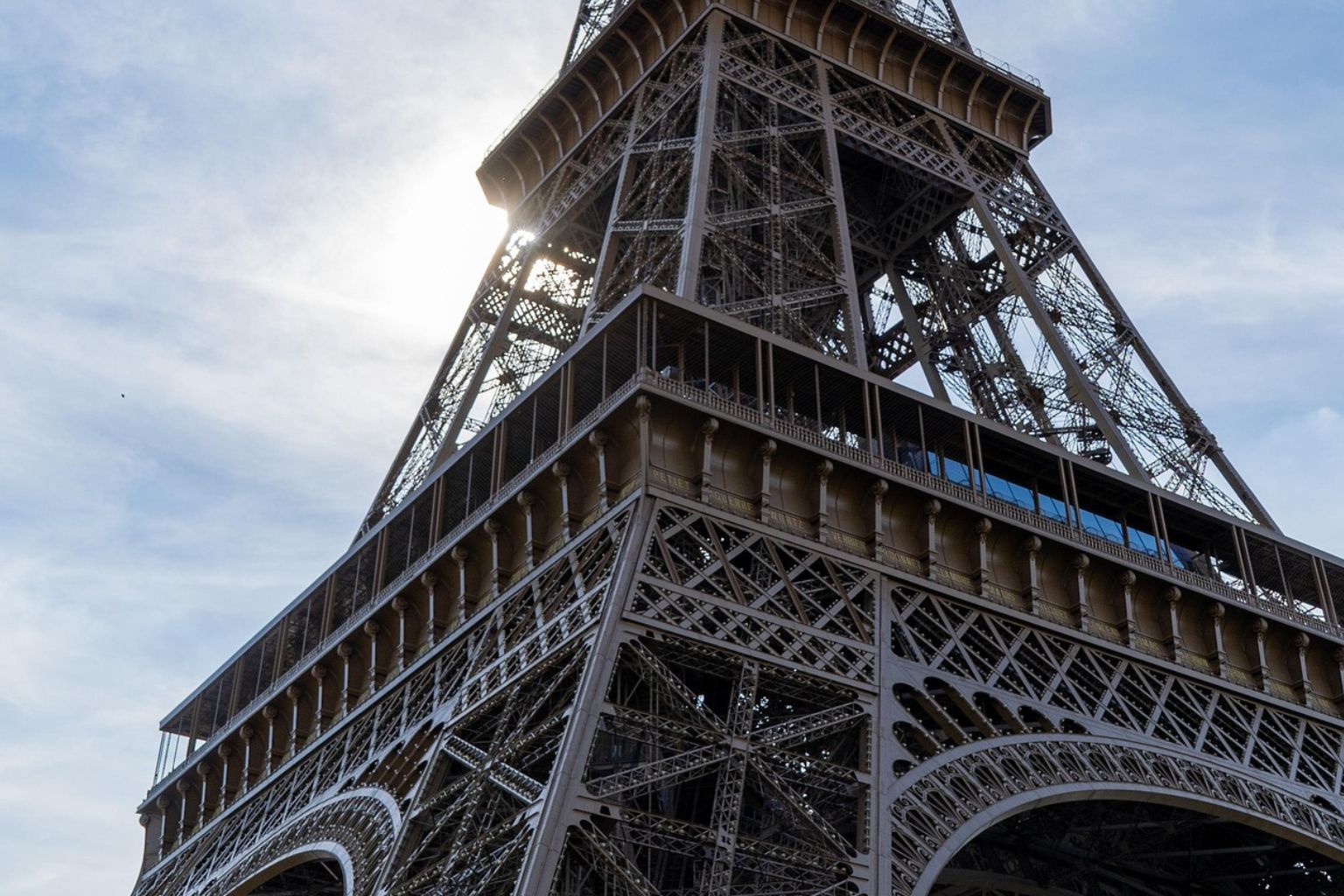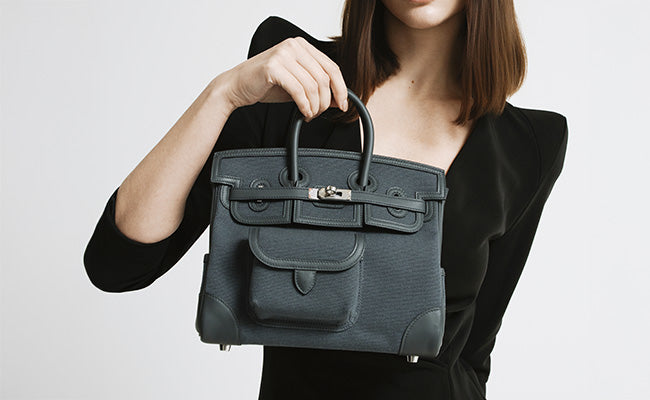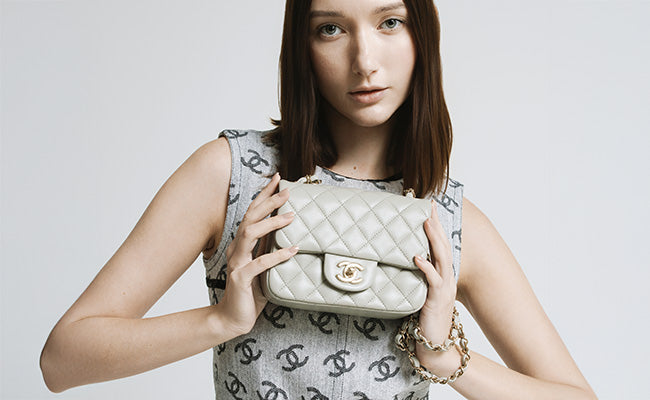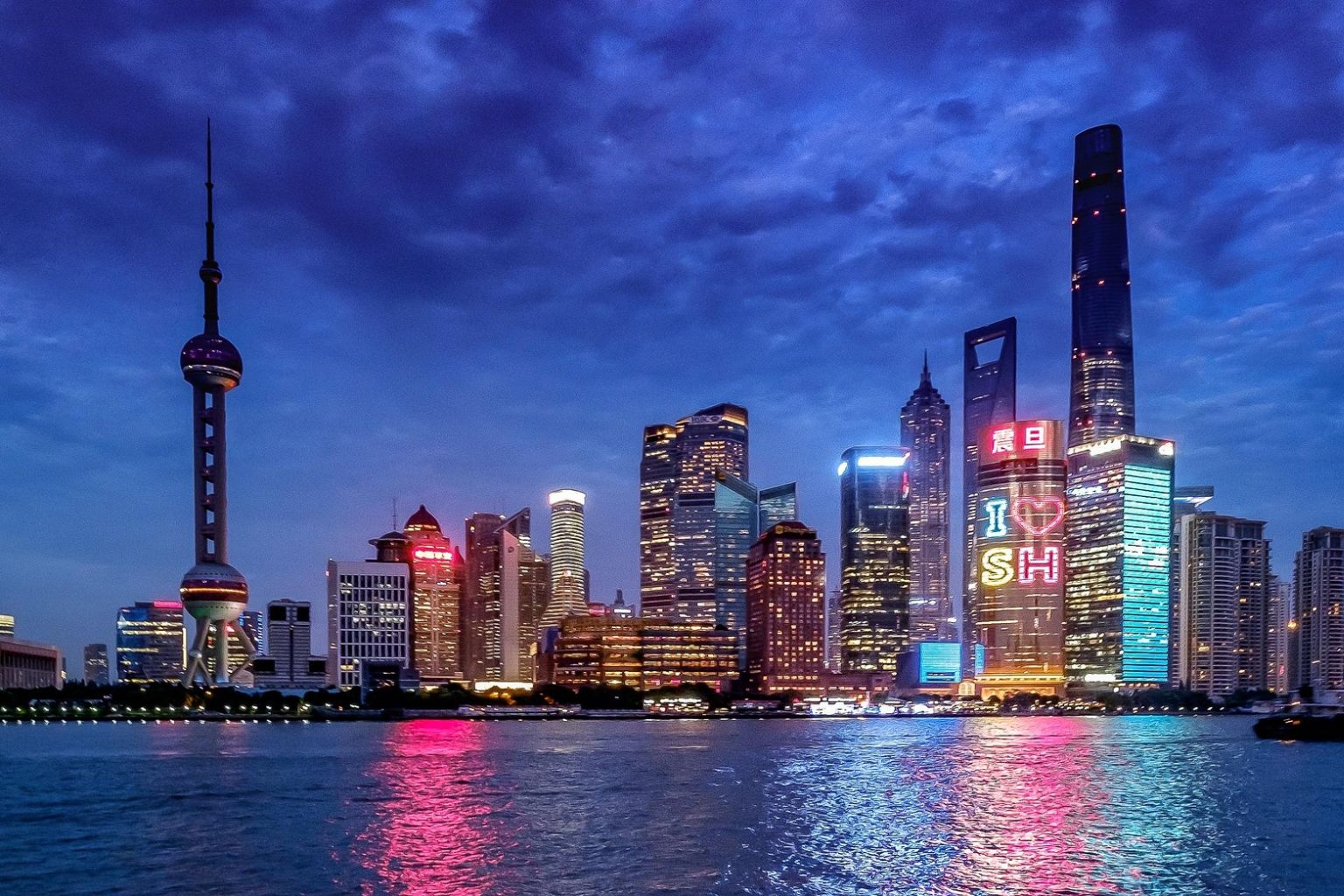
Cross‑Border Duties & Brokerage: A Buyer’s Guide (U.S. ↔ Canada)
Check out our Hermès collection and Birkin bags!
Shopping for a Hermès Birkin or Chanel bag across the border is thrilling, until those duties and brokerage fees hit. Whether you’re browsing New York boutiques or ordering from U.S. retailers, knowing the extra costs helps you avoid surprises and make better decisions.
Import duties, sales taxes, and brokerage fees can tack on 25-35% to luxury purchases moving from the U.S. into Canada. The exact number depends on the product, its value, and your province. The Canada Border Services Agency (CBSA) decides the final tally, but you can estimate it in advance.
Cross-border shopping doesn’t have to break the bank if you know the landscape. Personal exemptions, customs brokers, and smart shipping choices can all help keep costs down while staying on the right side of Canadian law.
Key Takeaways
- Cross-border luxury purchases get hit with duties, GST/HST, and sometimes brokerage fees, all of which can bump up your total bill
- Customs brokers help smooth out the import process and make sure your paperwork passes muster
- Planning around personal exemptions and choosing how you ship can save you money on cross-border buys
What Are Cross-Border Duties & Brokerage Fees?
If you’re importing a Hermès Kelly or Birkin, you’ll face two main types of costs: customs duties (set by governments) and brokerage fees (charged by companies that handle the paperwork).
Definitions and Key Terminology
Customs duties: Taxes governments collect on goods crossing borders. The rate depends on the product, its origin, and its value.
Brokerage fees: Charges from customs brokers who sort out the paperwork, calculate taxes, and pay things upfront so your goods clear customs.
Cross-border shipping between the U.S. and Canada means both countries’ rules apply. You pay duties to the country you’re shipping into.
A few terms pop up often:
- De minimis threshold: The value below which no duties are charged
- Disbursement fees: When brokers pay costs upfront and bill you later
- Service fees: What you pay for the broker’s work
How Brokerages and Duties Differ
Duties go to the government as trade taxes. Brokerage fees pay private companies for handling the process.
Duty Structure:
- Set by government policy
- Based on product codes
- Not negotiable
- Collected by customs
Brokerage Structure:
- Set by each company
- Reflects service complexity
- Sometimes negotiable, especially for frequent shippers
- Collected by the broker
Brokers don’t set duty rates, they just do the math and collect the money. You can’t dodge duties on taxable goods, but you can shop around for better brokerage rates.
Some couriers act as brokers by default, while others require you to arrange customs clearance separately.
Why These Fees Matter for Luxury Goods
Luxury items rack up higher fees because of their price tags. A $15,000 Hermès bag generates way more duty than a $150 scarf, even at the same percentage.
High-Value Impact:
- Duties are based on declared value
- Brokerage fees often scale with price
- Insurance and handling get pricier
- Paperwork gets more intense
Canada’s GST is 5% federally, and provinces pile on their own taxes. Combined, you could see 15-20% in taxes on luxury imports.
Luxury brands need precise paperwork. Border agents scrutinize high-end goods for counterfeits and mislabeling.
Exchange rates matter too. Fluctuations between U.S. and Canadian dollars can change your final duty bill.
It’s just smart to factor in these costs before you buy, so you’re not floored when the bill arrives.
How Duties & Import Taxes Are Calculated
Import duties and taxes depend on three things: the duty rate for your item, where it was made, and its value in Canadian dollars.
Duty Rate and Tariff Basics
Canada uses a tiered tariff system. The Most Favoured Nation (MFN) rate covers countries with trade deals, while the General Preferential Tariff gives breaks to developing nations.
Goods from CUSMA countries (Canada, U.S., Mexico) often get lower rates or even duty-free status. So, a Hermès bag shipped from New York might be taxed differently than one from Paris.
Current tariff structure:
- CUSMA preferential rate: 0-6%
- MFN rate: 6.5-18%
- General rate: 20-35%
Each product gets a tariff code that sets its rate. Luxury handbags have their own codes, separate from things like wallets or belts.
Impact of Product Type and Origin
Where your item was made affects the duty. A French-made bag gets a different rate than a U.S.-made one under CUSMA.
Luxury items often face higher rates. Handbags and leather goods can see 6.5% to 18% depending on materials. Designer accessories might fall under different codes.
Special notes for luxury goods:
- Exotic leathers may have extra rules
- Limited editions use the same rates as standard items
- Authenticity doesn’t impact duty, just paperwork
Materials matter. Genuine leather, synthetics, and fabric blends can push items into different tariff categories.
Valuation in Canadian Dollars
Canada calculates duties based on the item’s value in Canadian dollars. That includes the price, shipping, insurance, and any taxes from where you bought it.
They use the Bank of Canada’s exchange rate on the day the item enters Canada. A $3,000 USD bag might become $4,050 CAD, changing your duty bill.
Value includes:
- Purchase price
- Shipping and handling
- Insurance
- Foreign sales taxes
They multiply this value by the tariff rate. GST or HST then applies to both the item and duty, so your border costs add up fast.
Navigating Canadian Taxes: GST, HST, PST & QST
Importing a Hermès Kelly or luxury watch from the States means Canadian sales taxes get tacked on. GST is 5% everywhere, but some provinces use HST, and others add their own PST or Québec’s QST.
GST and HST for Cross-Border Purchases
GST (Goods and Services Tax): 5% on pretty much every luxury import. There’s no dodging it, whether you’re bringing in a $50,000 Birkin or a wallet.
HST (Harmonized Sales Tax): In five provinces, HST replaces both GST and provincial taxes. You pay one combined rate:
| Province | HST Rate |
|---|---|
| Ontario | 13% |
| Nova Scotia | 14% |
| New Brunswick | 15% |
| Newfoundland and Labrador | 15% |
| Prince Edward Island | 15% |
The Canada Revenue Agency collects HST at the border. No need to deal with separate bills from provincial agencies in these provinces.
For big-ticket items, HST provinces can actually simplify things. One payment, one receipt, less hassle.
PST and QST: Shopping by Province
PST (Provincial Sales Tax): Varies a lot. BC charges 7% PST on most luxury goods. Alberta charges nothing, no wonder people ship luxury cars there.
Saskatchewan is at 6%; Manitoba asks for 7%. These are collected at the border along with GST, so your $30,000 watch can cost more depending on where you live.
QST (Québec Sales Tax): 9.975%, and it’s handled separately from federal taxes. In Québec, you pay 5% GST plus 9.975% QST.
Here’s the kicker: QST applies to the price plus GST, not just the original price. That means luxury imports in Québec get hit a bit harder than in other provinces.
Tips on Minimizing Provincial Taxes
Ship to Alberta if you can. With no provincial sales tax, Alberta is the cheapest province for luxury imports, just 5% GST. Some collectors use Alberta addresses for high-value purchases.
Consider HST province consolidation. If you’re buying several luxury items, sending them all to Ontario (13% HST) can be better than splitting shipments to BC (12%) or Saskatchewan (11%).
Understand tax-free thresholds. Gifts under $20 and postal imports under $10 avoid taxes. Not much help for luxury goods, but handy for small accessories.
Use duty-free allowances wisely. Personal exemptions ($200 after 24 hours out of the country, $800 after 48 hours) apply before taxes, shrinking your taxable base.
The Role of Customs Brokers in Cross-Border Shopping
If you’re chasing a Hermès Kelly at a U.S. price, customs brokers handle the maze of paperwork and regulations. They help your high-end buys clear customs without drama or delays.
What Does a Customs Broker Actually Do?
A customs broker is your go-between with border agencies. They classify your items with the right codes and calculate the exact duties.
They handle:
- Filing customs declarations with precise product details
- Calculating duties, taxes, and fees
- Making sure you follow import/export rules
- Talking to customs officials when things get sticky
For luxury imports, brokers know which items get breaks under trade deals like USMCA. They can tell the difference between a leather handbag and a “luxury good” for customs.
Brokers also keep things moving. That limited-edition Birkin won’t get stuck in customs limbo, they track shipments and fix problems before they blow up.
For big-ticket items, brokers can provide bond services to speed up clearance, so your expensive bag isn’t waiting on payment processing.
How to Choose a Reputable Broker
Start by checking their license. In Canada, the CBSA licenses brokers. In the U.S., look for Federal Maritime Commission or customs broker licenses.
Look for:
- Luxury goods experience they should know the ins and outs of designer imports
- Good tech real-time tracking, electronic filing
- Insurance they should cover high-value shipments
- References from luxury retailers shows they handle expensive stuff right
Ask about fees. Some use flat rates, others charge a percentage for pricey items.
Check their response time. Luxury shopping is often time-sensitive, especially with seasonal or limited releases.
Ideally, pick brokers with offices near major shipping hubs like Vancouver, Toronto, New York, or LA. That usually means faster processing.
Working with a Broker on Each Side of the Border
Luxury cross-border shopping often means you’ll need brokers on both sides. Your U.S. broker handles export paperwork, while your Canadian broker takes care of import clearance.
They coordinate:
- Export permits for certain luxury goods
- Proof of authenticity for designer items
- Insurance docs for high-value shipments
Big brokerage firms usually have partners across the border, making communication easier.
If you’re a repeat luxury shopper, build relationships with both brokers. They’ll get to know your preferences and can speed up future shipments.
Some brokers offer consolidated shipping they’ll hold your purchases until you have enough to ship together, which can save on costs for smaller luxury items.
Give brokers detailed info: exact brand, model, and materials. “Black leather Chanel bag” isn’t enough for customs.
Canadian Border Services & Import Compliance
The Canada Border Services Agency (CBSA) has broad authority over imports. They require specific paperwork and procedures for clearance. If you mess up, you could face penalties, delays, or extra costs.
The Power of the Canada Border Services Agency (CBSA)
The CBSA runs Canada’s border operations and trade rules. They review import paperwork, enforce trade agreements, and check shipments for compliance.
They can inspect shipments, ask for more paperwork, or hold goods until you meet all requirements.
CBSA handles:
- Checking import paperwork for accuracy
- Assessing duties and taxes
- Enforcing trade compliance
- Doing physical inspections if needed
- Licensing customs brokers
CBSA staff work at all Canadian ports of entry. Their decisions decide if your luxury buy clears smoothly or gets stuck.
Documentation and Clearance Procedures
You need proper paperwork for CBSA clearance. They want specific forms and details before they’ll release your goods.
You’ll need:
- Commercial invoice with clear item descriptions
- Bill of lading or airway bill
- Packing list with weights and counts
- Import permits (if needed)
- Proof of origin certificates
CBSA processes imports through their Integrated Import Declaration system. Most commercial shipments require formal accounting within five business days of release.
Declare all values in Canadian dollars. If CBSA thinks you’ve undervalued something, they can reassess and charge more duty.
Personal imports over $20 CAD get hit with duty and tax. You can use CBSA’s online calculators to get a sense of the costs before your shipment lands.
Penalties for Non-Compliance
The CBSA uses their Administrative Monetary Penalties System (AMPS) to keep importers in line. These penalties aren’t pocket change they can sting, and they might even mess with your ability to import in the future.
Typical violations? Think missing paperwork, botched valuations, or forgetting those import permits. The fines swing wildly, from a few hundred bucks to tens of thousands, depending on how badly you’ve messed up.
Penalty ballpark:
- Incomplete documentation: $25 to $2,000
- Incorrect classification: $250 to $5,000
- Valuation errors: $400 to $25,000
- Missing permits: $1,000 to $25,000
If the CBSA thinks it’s serious, they might just seize your goods. And if you keep getting it wrong, expect them to keep a closer eye on your shipments or worse, cut you off from importing altogether.
Even if you use a customs broker, you’re still on the hook for compliance. The CBSA holds importers responsible for every duty, tax, and penalty, no matter who filled out the forms.
Strategies for Savvy Luxury Shoppers
Getting smart about luxury shopping across borders means seeing past the price tag and knowing when those duty exemptions actually kick in. If you want to avoid sticker shock, you’ve got to tally up every expense and time your buys to take advantage of trade perks.
Factoring Duties and Brokerage into Total Cost
So you’re eyeing that Hermès Kelly in New York? The price on the tag is just the start. Cross-border shipping and customs duties can tack on another 20-30% sometimes more.
Let’s do some napkin math. That $12,000 bag? After duties and fees, you’re looking at about $15,600:
- Duty: 6.5% on leather goods
- GST/HST: 5-15%, depending on your province
- Brokerage: $25-75 for most couriers
You’ll need all your receipts at the border CBSA won’t guess, and fudging the numbers can land you in hot water fast.
Honestly, it’s best to tally these extras before you fall for something. That Miami “deal” might end up costing more than just buying at home once you add everything up.
Understanding Exemptions and Duty-Free Options
Personal exemptions are your best friend when it comes to luxury buys. If you’ve been outside Canada for 48 hours or more, you can bring back $800 duty-free. For 24 hours, it’s $200.
The catch? One Hermès scarf can blow past those limits in a heartbeat. But if you’re traveling with family, you can pool exemptions, or space out purchases over a few trips.
Gifts count too. Stuff marked as gifts under $20 is duty-free, but let’s be real, luxury brands rarely fit that bill. Inherited items or things you already owned get a different look, but you’ll need paperwork to prove it.
Moving or getting married? There are special rules for wedding gifts and household effects. Customs brokers usually know these details better than most of us.
And don’t forget: your exemption resets with every qualifying trip, not by the calendar.
Leveraging Trade Agreements and Tariff Reductions
USMCA (the old NAFTA) still means lower duties on North American luxury goods, even with the current tariff drama. For example, Italian leather finished in Mexico might get you a better rate than something straight from Europe.
You’ll need a certificate of origin to claim USMCA perks. Luxury brands don’t exactly shout about where they assemble things, but you can always ask.
European luxury? That’s a whole other set of rules. Swiss watches, French perfumes, they each have their own duty rates. Thanks to the Canada-EU deal (CETA), a lot of European luxury goods are now duty-free.
If you’re keeping tabs on trade policy, you might save a bundle by timing your purchases. Sure, U.S.-Canada tensions add some drama, but the trade deals are still in place for goods that qualify.
A good customs broker is worth every penny for complicated luxury buys. They know the codes that decide if your new watch gets hit with 6.5% or 11% duty.
Frequently Asked Questions
Dealing with cross-border duties on luxury stuff means knowing about carrier fees, paperwork, and the best timing. The savviest shoppers use their exemptions, pick smart shipping options, and lean on expert brokers to keep costs down on those big-ticket buys.
How might I seamlessly manage duties when splurging on an Hermes bag from the States?
If you’re going all-in on a Birkin or Kelly, a little planning goes a long way. Always declare the full price, trying to fudge the numbers on luxury goods almost always backfires.
Use your personal exemption if you qualify: $200 after 24 hours, $800 after 48. Anything above that gets hit with GST/HST and usually a 6.5% duty for designer bags, plus your province’s tax.
Sometimes it’s easier to have the bag shipped, so you’re not carrying receipts through customs. You can even get a customs broker to pre-clear it, which can speed things up.
Can you dazzle me with tips for minimizing brokerage fees on precious imports?
Couriers love their brokerage fees, sometimes $30-50, even on tiny items. You can dodge a lot of that by using Canada Post or shipping to a U.S. border pick-up spot and clearing it yourself.
If a retailer offers “ship to store” near the border, take it. You can pick up your item and handle customs personally.
Buying a few things? Combine them into one shipment. Paying $100 once is better than three separate fees.
And sometimes, honestly, paying a bit extra at a Canadian store is less hassle than dealing with all the import headaches.
What must-know customs nuances should a luxury aficionado consider between the U.S. and Canada?
Designer goods get different treatment depending on where they’re made. A French-made Hermès could qualify for lower duties under CETA.
Keep your paperwork handy, CBSA checks authenticity, and missing docs can mean big delays.
Some items, like jewelry or watches, might need extra permits or get more scrutiny. Always declare everything clearly to avoid trouble.
If you’re a frequent shopper, spreading out your big buys is smart. Too many pricey imports in a short time can get you flagged for extra attention.
Could you spill the tea on navigating the harmonized tax system without wrinkling my silk scarf?
Those HS codes decide your duty rate, and luxury stuff covers a lot of categories. Handbags are usually under HS 4202 and face 6.5% duty.
Silk scarves, wool scarves, they’re not taxed the same. Double-check the classification so you’re not caught off guard.
Belts, wallets, small leather goods, they each have their own HS code. Knowing which is which helps you budget.
Not sure? You can always ask CBSA for an advance ruling. Saves headaches at the border, especially for high-end buys.
Any secret routes for a Canadian to avoid the usual customs dance when acquiring stateside opulence?
No magic loopholes, sorry but you can get strategic. Time your buys with legit U.S. trips to use your duty-free allowance.
Cross-border shopping services can forward your purchases and handle customs for less than a courier might charge.
Some luxury brands have duty-paid warehouse programs, items ship from within Canada, so you skip the import mess.
And if you’re a serious collector, getting to know a good customs broker is worth it. They’ll help you get it right and maybe even save you some money.
What's the lowdown on carrier-specific brokerage nuances for those of us with a penchant for lavish lifestyles?
UPS and FedEx slap on hefty brokerage fees, sometimes way out of proportion to what you actually get, especially with luxury goods. Sure, they’re convenient, but that convenience can sting your wallet more than you’d like.
DHL usually asks for more reasonable brokerage rates and actually treats luxury items with a bit more respect. If you’re shipping high-value stuff, they’re definitely worth a look.
Canada Post barely charges handling fees compared to the big couriers. If you’re not in a rush for your luxury buy, you could save a surprising amount going this route.
Private freight forwarders? They know their way around luxury shipments and often go the extra mile with white-glove service. These folks really get why careful handling and spot-on documentation matter for expensive things.




